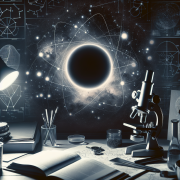Fusion Energy Breakthrough: How Scientists Are Containing a Mini-Sun on Earth
The Future of Fusion Energy: Containing a Mini-Sun on Earth
For decades, nuclear fusion has been a tantalizing promise—a virtually limitless, clean energy source that mimics the Sun’s power. The familiar claim that “fusion is always 50 years away” has persisted, yet progress in the field suggests that this timeline may finally be shrinking. The past decades of research and engineering have chipped away at once-formidable challenges, leaving no single “deal-breaker” problem in the path to commercial fusion power. Today, one of the final hurdles is how to physically contain a fusion reaction, or as some put it, “how to bottle a star.”
The Physics of Fusion: Creating and Containing a Plasma
At its core, fusion is the process of merging atomic nuclei to release energy, a reaction that powers all the stars in our universe. The Sun sustains its nuclear inferno by crushing hydrogen atoms together under immense pressure and heat, reaching temperatures of over 15 million Kelvin. Here on Earth, fusion reactors must generate even higher temperatures—around 150 million Kelvin—to achieve the necessary energy output, since they lack the Sun’s incredible gravitational pressure.
But this intense heat poses a fundamental challenge: no material can withstand direct contact with plasma at such extreme temperatures. Engineers have developed two broad approaches to solve this problem:
- Inertial Confinement: Fusion fuel is compressed and heated rapidly using high-energy lasers or other means. The National Ignition Facility (NIF) in the United States recently succeeded in this method, achieving a brief yet significant net energy gain. However, current designs are highly inefficient for sustained power generation.
- Magnetic Confinement: Fusion fuel in the form of ionized plasma is contained using powerful magnetic fields, manipulating charged particles to keep them away from reactor walls. This approach is the basis of the ITER project, the world’s most advanced fusion experiment.
Magnetic Confinement and the Tokamak
Magnetic confinement reactors, particularly tokamaks, have emerged as the dominant fusion technology. In a tokamak, superheated plasma is shaped into a donut-like torus using a combination of powerful electromagnets. These reactors leverage three distinct magnetic systems:
- Toroidal Field: Maintains the general donut shape.
- Poloidal Field: Helps position and compress the plasma.
- Central Solenoid: Generates an electric current in the plasma, helping drive its movement and sustain the reaction.
The competing stellarator design avoids the need for a large solenoid by using a complex, precisely-wound set of magnets instead. Stellarators are known for greater stability but are more challenging to build.
Regardless of the approach, confining plasma requires overcoming turbulent instabilities. Any structural failure in the containment system could trigger massive disruptions, cooling the plasma and potentially damaging the reactor.
Image: [1, Tokamak fusion reactor diagram]
The First Wall: Engineering a Reactor That Can Withstand a Star
The inner wall of a fusion reactor—the first wall—is arguably one of the most critical engineering challenges. This surface acts as a barrier between the hot plasma and the machine’s structural elements. But it must also enable three crucial functions:
- Survive Extreme Heat and Radiation: Plasma-facing materials must resist intense temperatures and bombardment by high-energy neutrons.
- Conduct Heat Efficiently to Generate Power: Excess heat needs to transfer smoothly so energy can be extracted.
- Breed Fuel for Sustained Reactions: The reactor must generate tritium fuel using lithium-enriched inner walls since natural tritium supplies are scarce.
Material Choices for the First Wall
Tungsten: The Traditional Metal Choice
Tungsten is widely favored because:
– It has the highest melting point of any metal, making it resistant to fusion-level heat.
– It is structurally strong and sheds fewer particles into the plasma.
– It retains low amounts of radioactive tritium, reducing contamination risks.
However, tungsten is not without drawbacks. If any tungsten atoms become dislodged and enter the plasma, their high atomic number contributes to “line emission cooling,” where the plasma loses heat via radiation much more efficiently than desired—potentially killing the fusion reaction.
Beryllium: ITER’s First Attempt
ITER had originally planned to use beryllium as the plasma-facing surface. It had some promising advantages:
– Lower Atomic Number: Reduces cooling effects when entering the plasma.
– Oxygen Capture: Helps clean impurities that can further destabilize the plasma.
– Neutron Multiplier: Increases the efficiency of tritium breeding.
But ultimately, ITER moved away from beryllium because of major downsides:
– Erosive Instability: Beryllium erodes more quickly than tungsten, requiring frequent replacement.
– Toxicity: Beryllium dust is highly toxic, posing risks to engineers working on the reactor.
Image: [2, Plasma-wall interface in a fusion reactor]
The Case for Liquid Walls
Some experimental approaches consider replacing conventional solid first walls with liquid lithium coatings. A liquid wall offers several potential benefits:
– Self-Healing Properties: Liquids don’t experience structural damage in the same way as solid walls.
– Cooling & Tritium Breeding: Lithium could double as both the coolant and a tritium breeding medium.
– Plasma Compatibility: Some studies indicate that lithium in plasma may improve stability and enhance heating efficiency.
However, using a liquid metal surface has its own engineering challenges, including managing potential instabilities and ensuring that the liquid remains evenly distributed across the reactor’s inner walls.
The Road to Commercial Fusion Power
ITER is currently on track to generate its first plasma in 2025 and its first full fusion reaction around 2035, with commercial-power-grade production a few years after that. However, private sector startups are betting they can reach viable fusion reactions even sooner, challenging the dominance of large government-funded projects.
Regardless of which approach wins, the fundamental breakthroughs needed for fusion energy—safe confinement, reactor wall longevity, and tritium self-breeding—are now actively being solved. The fusion era might not be “50 years away” anymore; we could very well be on the brink of a clean energy revolution.
Image: [3, Future commercial fusion power plants concept]
If fusion succeeds as a scalable energy source, it could reshape our world, eliminating the need for fossil fuels and enabling advances in fields ranging from space travel to AI-powered scientific research. We may soon witness the birth of an era where artificial stars light up our power grids—fulfilling humanity’s long-held dream of limitless energy.
Interested in the evolution of astrophysics and how fusion ties into broader scientific discoveries? Check out our other articles, such as “The Search for Vulcan: How a Phantom Planet Led to General Relativity” and “Hubble Tension and the Dark Energy Crisis: A New Cosmic Puzzle”.









Fusion has long been a seemingly unreachable goal, but today’s breakthroughs suggest we may truly be at the dawn of an energy revolution.